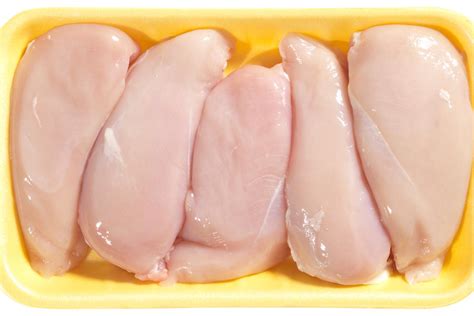How to Tell If Chicken Is Bad: A Guide to Food Safety
Chicken is a versatile and delicious protein source, but consuming spoiled chicken can lead to serious foodborne illnesses. Knowing how to identify bad chicken is crucial for your health and safety. This guide will walk you through the key signs to look for, ensuring you only cook and eat fresh, safe chicken.
Visual Inspection: The First Line of Defense
The first step in determining chicken freshness is a thorough visual inspection. Look for these telltale signs:
1. Discoloration:
- Normal: Fresh chicken should have a pinkish-red color. The color might vary slightly depending on the cut and age of the bird, but it should be relatively uniform.
- Bad: Significant discoloration, such as greenish-gray or yellowing, is a strong indicator of spoilage. This is due to bacterial growth breaking down the meat's pigments.
2. Slime or Stickiness:
- Normal: Slightly moist is okay. Fresh chicken should feel relatively dry to the touch.
- Bad: Excessive stickiness or the presence of slime is a major red flag. This often accompanies foul odors and indicates significant bacterial contamination.
3. Unusual Odor:
- Normal: Fresh chicken has a mild, slightly sweet aroma.
- Bad: A sour, pungent, or ammonia-like odor is a clear sign that the chicken has gone bad. Trust your nose; if it smells off, it probably is.
Beyond the Visual: Other Indicators of Spoilage
While visual cues are important, there are other factors to consider when assessing chicken freshness:
4. Packaging Integrity:
- Normal: The packaging should be intact and free of leaks or punctures.
- Bad: Damaged packaging increases the risk of contamination. If the packaging is torn or leaking, it's best to err on the side of caution and discard the chicken.
5. Expiration Date:
- Normal: Always check the expiration or "use by" date on the packaging.
- Bad: While not always foolproof, the expiration date provides a general guideline. Avoid using chicken that has passed its expiration date.
6. Texture Changes:
- Normal: Fresh chicken should feel firm and springy to the touch.
- Bad: If the chicken feels unusually soft, mushy, or slimy, it's likely spoiled.
What to Do with Spoiled Chicken
If you find that your chicken shows any of the above signs of spoilage, discard it immediately. Do not attempt to salvage it by cooking it; this will not eliminate harmful bacteria. Properly dispose of the chicken in a sealed bag in the trash.
Preventing Chicken Spoilage
Proper storage is key to preventing chicken spoilage:
- Refrigeration: Keep raw chicken refrigerated at or below 40°F (4°C).
- Freezing: For longer storage, freeze chicken in airtight containers or freezer bags. Properly frozen chicken can last for several months.
- Thawing: Thaw chicken safely in the refrigerator, under cold running water, or in the microwave. Avoid thawing at room temperature.
By carefully observing these guidelines, you can significantly reduce your risk of foodborne illness and enjoy delicious, safe chicken meals. Remember, when in doubt, throw it out!
